Weekly birding round-up: 26 Apr - 02 May 2017
The late throws of April were a classic mixed bag of both birds and weather. The start of the week continued the run of winds from generally somewhere to the north of west, bringing in a few hefty squally showers in many places countrywide (as is so often the case they were random in the extreme, you could see great swathes and sheets of rain, hail (even snow for some) falling two miles away as you bathed in bright sunshine).
Highs and lows fought it out for dominance through the weekend and beyond; there wasn’t a huge amount of rain until some sharp pulses cut their way across parts of the southwest and southeast through Sunday - the isobars narrowed at the same time as winds from the hallowed southeast were sucked up at the same time.
The southeasterlies were relatively short lived and after a wander around to the southwest, the winds started to settle in the northeast as the week drew to a close, the sun shone and birds continued to surface over the long Bank Holiday. And that’s where the winds appeared to be settling as we came to the end of the week. Which is better for some than others.
But, as was mused upon again at the end of last week’s review, the early odds favoured, for the second week in a row, casting eyes out to the west for the star prize and this week, Orkney’s most northerly isle delivered, in the very best style imaginable, claiming the ultimate birding prize, the always longed for potential national first.
And a rather thing she was too…
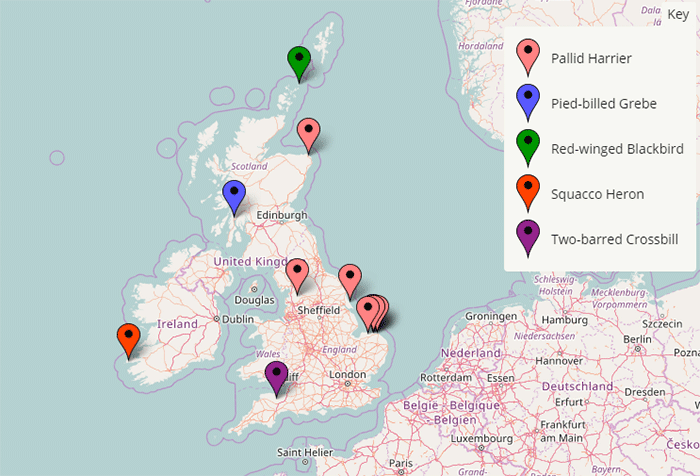
Come the start of the week it would have taken a brave soul to select Red-winged Blackbird as the bird that would enliven the British birding scene’s year so far, but that’s exactly where we found ourselves as Saturday drew to a close.
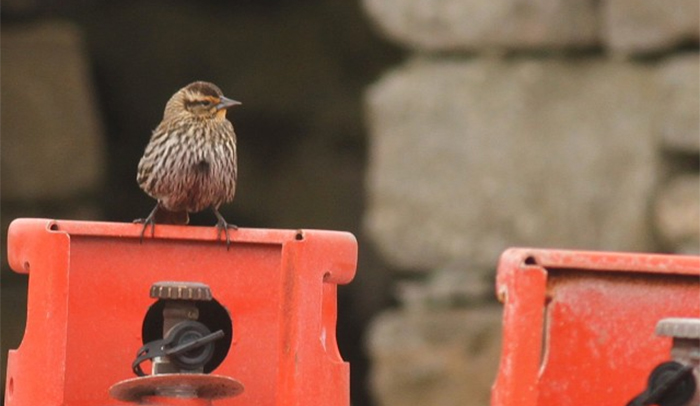
You may have had money on the a northern island claiming the bird of the week and also that any species involved was from the Nearctic, as was the case with Shetland’s Hermit Thrush from seven days ago, but few could ever have seen this one coming; completely out of left field, here was a sometimes anticipated but now oft forgotten about potential British & Irish 1st - not the luminous über wood-warbler that so many hold as a “wishlist” rare (who wouldn’t want to see a spring male Cerulean Warbler in a wood somewhere?) but a (at first glance) rather low key female Red-winged Blackbird…
…of course, she wasn’t low key at all.

Not only a sensational find for the Observatory staff on Orkney’s North Ronaldsay but this was a Red-winged Blackbird that was oozing field marks a go go; surprisingly far from subtle with dashes of colour around the face and the breast, well defined bright markings above and below, with a unique shape (in terms of anything else we see here) and with a fondness for the iris beds and gas canisters close by.
What’s not to love about a bird like this?
Those who headed north on 30th, 1st and 2nd would have loved the fact that the money invested in to flights on to the island weren’t in vain, the Red-winged Blackbird still playing a sometimes furtive game of hide-and-seek in the iris bed but the important thing was that it was still present and all those cheque book birders (who follow the BOURC listing game) will now be hoping that this is the specimen that elevates this particular vagrant away from a current standing of Category E only.
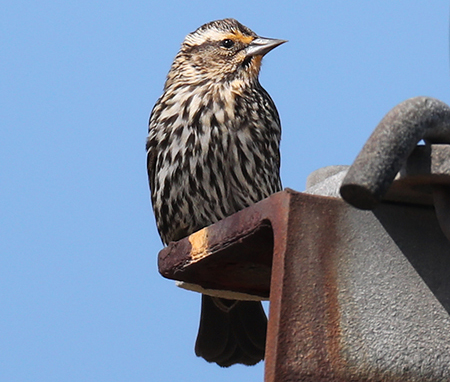
The vagrancy potential of Red-winged Blackbird may not be as high as some Nearctic vagrants that have arrived here in the past, many US books list them as being not a hugely long range migrant and it would have to fit a bird from the northern part of the range. But they do still migrate over a sizeable part of the country and the weather was pretty good to draw one out in to the Atlantic too…
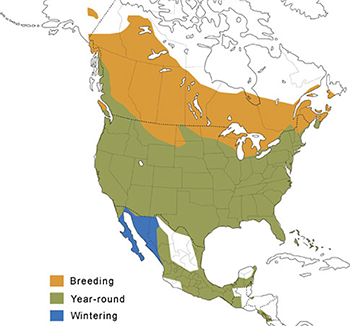
This one feels as though it has everything going for it - a good northerly island location, an excellent time of year and with an impressive little weather system that followed on from the one that had already dropped Shetland that Hermit Thrush.There’s no way of knowing 100% if it hopped on a ship for a while, but logic suggests that this is the most likely scenario. That (obviously) shouldn’t be a barrier to a Category A upgrade, far from it.
Is there much difference between this new arrival on North Ronaldsay and our first two records of the similar Brown-headed Cowbird both of which have been mentioned here in the last two weeks or so - on Islay on April 24th 1988 and Belford, in Northumberland, on April 25th 2009 - no, not really. And those springtime sparrows, they didn’t make it under their own steam. And the BOURC acknowledge that ship-assistance isn’t necessarily a hindrance to acceptance on to the British List.
There feel to be some similarities with House Finch too - but that may be a slight red herring despite the clamour to pop that Cornish and Devonian bird on to Category A. Missing out at a place on the top table by the just casting vote of the Chair House Finch came within a whisker of full acceptance to the British List. The reasons why it didn’t make it have been discussed here and elsewhere in detail, but some of those arguments against acceptance feel less strong where the North Ron Red-winged Blackbird is concerned, even if some wish to employ them.
Logic and the all the evidence point squarely at this being, without doubt, an outstanding candidate for Category A. If I was still a rampant island-hopping lister, I’d have been there like a shot.
And there’s surely going to be more of a surprise if this doesn’t make it…
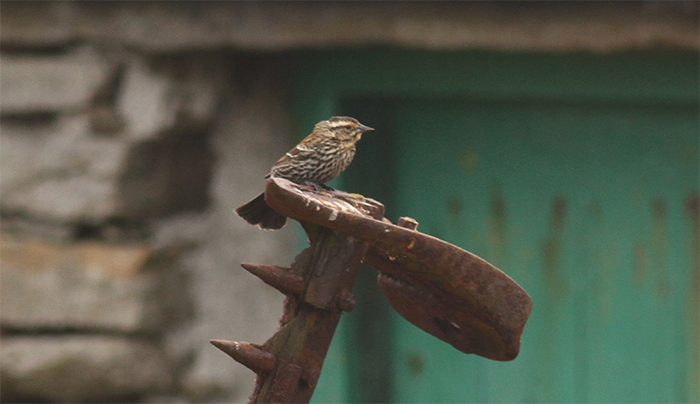
Historically, this was a species which was apparently imported here in some number through the 19th Century - in his still excellent reference Rare Birds in Britain, 1800-1990, Lee Evans cites at least 18 records between 1824-1885, spread widely across the country and seen across all parts of the year too. One bird is listed as having the potential to have been a genuine vagrant, a male captured on the Nash lighthouse, on the Welsh side of the Bristol Channel at 3am on October 27th 1866 - and you can see why folk may have thought that that record was ok.
Let’s see where we go with it all but come October 2018, this will be appearing in print at the top table - 0,0,1 and all that…
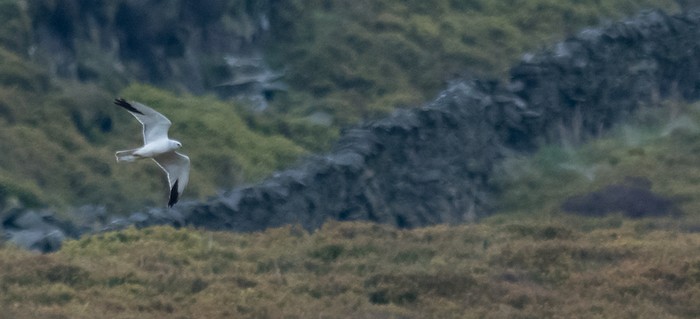
When you see the words “Forest of Bowland” and “harrier” conjoined it is often in the grimmest of circumstances, wildlife crime and in particular raptor persecution being common place on this upland area of Lancashire, where grouse moor money and politics take precedent over everything else, birds of prey regarded as “fair game” and routinely extirpated.
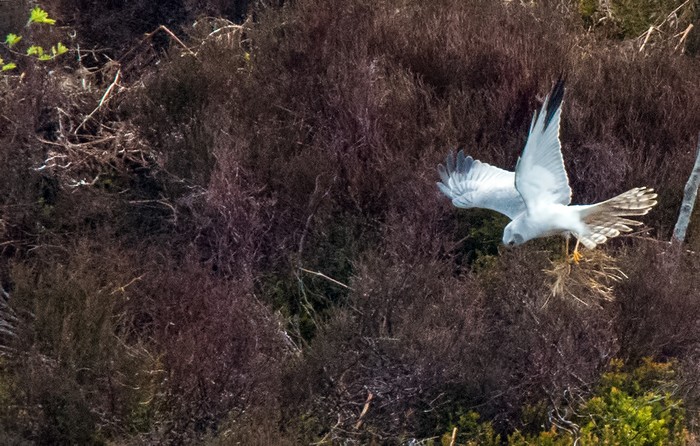
So, the news of an adult male Pallid Harrier being seen on the moors at Whitendale Valley, two and a half miles north of Dunsop Bridge on 27th was both exciting and nerve-shredding.

The bird was first noted on 26th and you just hope that nothing untoward happens. So far, so good as the bird remained in a well watched area, under RSPB guidance, until 2nd, drawing a host of admirers up and down the six mile round-trip through the pretty valley and for those who made the trek, this absolute gem didn’t disappoint, sky-dancing from time to time for an almost unique British experience.
Grace and beauty embodied within one delightful bird of prey.

Who knows though how landowners and gamekeepers will react to increased birder activity on the edge of the moors but the BASC (sic) have already been active on Twitter bemoaning the bird’s arrival.

There’s been just one Lancashire record of Pallid Harrier to date, a juvenile was reported flying through Brockholes Quarry on May 7th last year, so all the local listers will be getting the boots on and having a hike.

This week’s male comes hot on the heels of the adult male that flew through East Yorkshire on April 23rd, continuing the run of adult males that has been touched upon here a couple of times of late.
That East Yorkshire male of 23rd was seen an early morning fly through at Grimston and less than a week later, locals repeated the same feat with their second Pallid Harrier in six days when a juvenile headed north over the site on the morning of 29th.
Displaying #Bowland Pallid Harrier complete with purring trill call. Would probably have been easier to video a Swift on speed. Spectacular. pic.twitter.com/z1qu8joPIb
— Gavin Thomas (@GTAlstonWader) April 29, 2017
The third Pallid Harrier of the week was a juvenile/1st summer female that appeared (in front of me…!) along the northeastern corner of Blakeney Freshmarsh (Norfolk) on the morning of 2nd. This one tracked east across the neighbouring Cley NWT reserve, making a couple of brief stalls across the bushes within the main reedbed before popping the burners on and heading back west across the southern end of the Freshmarsh, watched to a speck in the distance off towards Morston. Needless to say it was a rather exciting 10 minute session!
This is Norfolk’s second Pallid Harrier of the year, following on from the bird in the New Holkham area of the county a few weeks ago. It will be the 11th record for Norfolk and is the fifth to be seen in May; in 2003, a 1st summer female spent a couple of days around Blakeney Point and it was followed by a May Day youngster at Aylmerton in 2009, a first-summer male west through Cley, Blakeney Point and Morston on May 5th 2012 and a juvenile at Horsey on May 8th 2013.

Still not in a hurry to depart its west coast surroundings was the Squacco Heron that remained at Ventry (Co. Kerry) until 1st, a 15 day stay and now one of the longer jaunts this species has spent in Ireland.

Of the 19 Irish Squaccos to date, just four others have made it to double figure stays; one of Wexford’s two birds stayed for 18 days at Ferrycarrig, from April 19th 1988; Wicklow’s only record stayed for 25 days at Kilcoole from August 11th 1999; the most recent of Derry’s two birds spent 25 days at Lough Beg in July and August 2007 but they all fall away compared to the mammoth 105 days clocked up by one of two Squacco Herons that arrived at Dungarvan Harbour (Co. Waterford) on May 2nd 1994, it was last seen on August 14th. The Kerry bird has some way to go…
Still in Somerset at the start of the new week was the beefy male Two-barred Crossbill at Haddon Hill, showing well to 29th. That seemed to be all there was to say about this particular bird until the surprise news of 30th that the male had been joined on site by a second bird. Blimey Charlie - who saw that coming?
Still present and correct way up in Argyll & Bute this week was the male Pied-billed Grebe, enjoying the bachelor life at Loch Feorlin, near Minard through until 2nd.
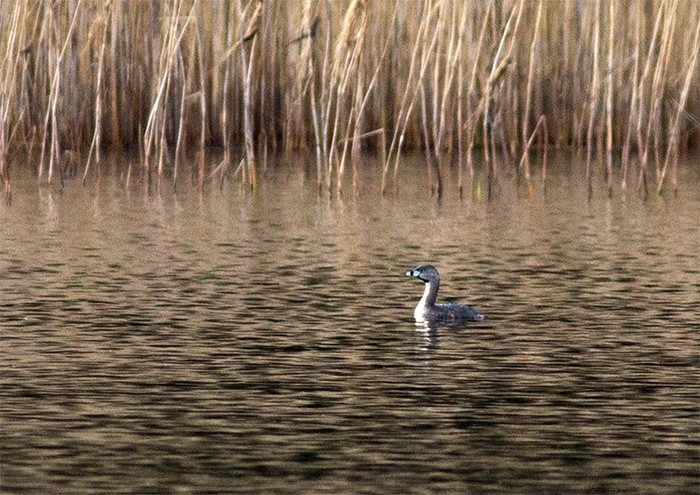

Getting things started this week was a White-billed Diver seen from the ferry in Bluemull Sound, between Fetlar and Unst (Shetland) and also the usual adults that remained between South Ronaldsay and Burray (Orkney), both seen between 26th-1st (the latter being very popular post British 1st Blackbird).
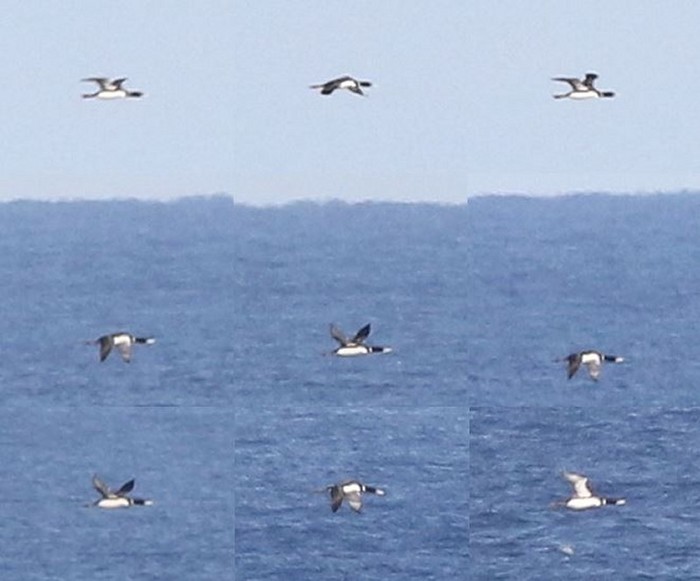
Three summer adult White-billed Divers were logged off Portsoy (Aberdeenshire) on 28th with the week’s second Shetland bird heading north off Flubersgerdie, Unst the same day. Also on 28th, lone adults along the Scottish coast were seen again at Lossiemouth and also Cullen (Moray) with a single still at Portsoy to 29th. Whilst attention was focused entirely on North Ronaldsay on 30th, those birding Papa Westray noted the usual White-billed Diver was still in situ.
One thing was a sure fire guarantee come the morning of 30th was that there’d surely be a sizeable push of Pomarine Skuas through the English Channel as the weather was nigh-on perfect for a sizeable movement off the usual south coast counties. And those magnificent spooners didn’t disappoint.
Kent was at the centre of the action with Dungeness seawatchers logging at least 129 Poms through the day. Doubtless there was some cross-over with counts from other Kent sites, bit as many as 325 may have passed the county in the day, 70 were counted off Bockhill and at least 55 went past Walmer. In East Sussex Birling Gap birders logged 45 with 47 from Splash Point, Seaford while up to 61 were seen from West Sussex headlands.
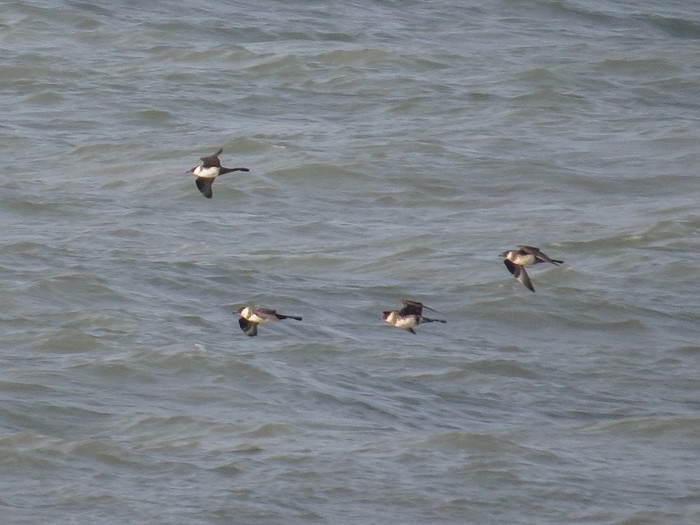
Other Pomarine Skuas were recorded from Cornwall and Devon to Hampshire and the Isle of Wight, with at least eight off Minsmere (Suffolk). One was seen off the Outer Hebrides and three Irish counties recorded one or two each.
Numbers were modest on 1st, three small double figure tallies logged in West Sussex (off Selsey Bill) and again in neighbouring East Sussex, at both Birling Gap and Splash Point, with a low double figure total for both Dungeness and Portland Bill as well.
Half a dozen Balearic Shearwaters were very thinly spread from Cornwall to West Sussex on 30th-2nd, two off them off Prawle Point (Devon) on April’s last day.
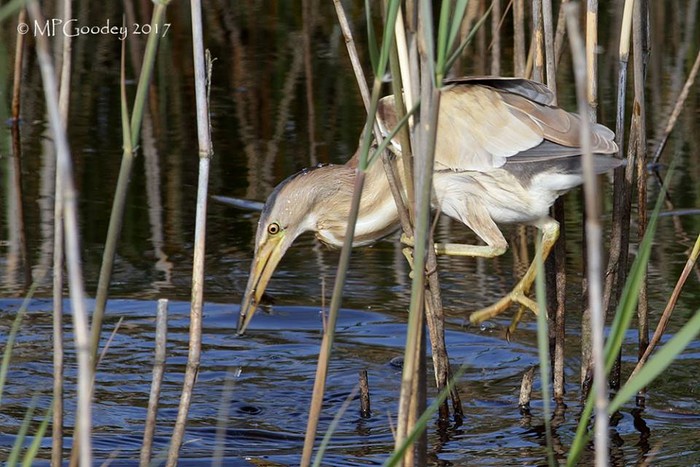
On Scilly, the sometimes obliging female Little Bittern remained at Lower Moors, St. Mary’s though until 2nd. The 21st record for the islands, it is also the fifth record for April.

New on Scilly (where the birders are enjoying a fine run of rare herons this spring) was at least one Night Heron on 1st, seen around Porth Hellick, St. Mary’s, with one at Lower Moors later that same evening (with one theer again on 2nd). Ahead of that, four further Night Herons began the new week still in situ at their favoured locations from previous days; two first-summers remained at Castlebay, Barra (Outer Hebrides) and lone adults were still to be seen at Adare (Co. Limerick) and near Shrewsbury (Shropshire) - all present on 26th with one of the Hebridean birds present to 30th, the Limerick bird to 1st and the Salopian shower was in place to 2nd.
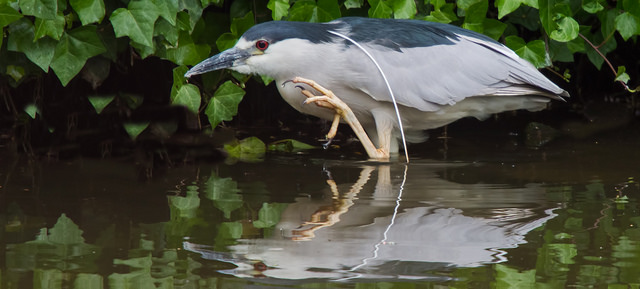
The first Purple Heron for the week was a May Day bird that headed in from Foreness Point (Kent) and it was followed by two in East Anglia on 2nd, at Hickling Broad (Norfolk) and Trimley Marshes SWT (Suffolk). The week’s fourth, also found on 2nd was seen at Marazion Marsh RSPB (Cornwall).

Numbers of Cattle Egrets dropped a bit this week but there were still at least 80 birds located in 18 British and Irish counties, extraordinary numbers given we’re now in May. The southwest remained the prime focus, 30 individuals recorded in the region’s four counties, with 15 in Somerset, including at least 12 on Meare Heath on 28th. Seven were in Devon (five of them at South Milton on 26th) with five for Dorset and three in Cornwall.
A further 22 were recorded around the rest of England, including seven in the northwest and at least five in the Midlands (four were at Frampton-on-Severn in Gloucestershire to 26th) with four on the Isle of Wight, four in East Anglia and a single for the northeast.
Ireland scooped up a further 22 Cattle Egrets, 11 of them in County Cork, seven of those were seen at Crosshaven, near Cork Harbour on 26th and nine remained at Tacumshin (Co. Wexford) to 1st while six were in Wales, at Borth (Ceredigion) the same day.
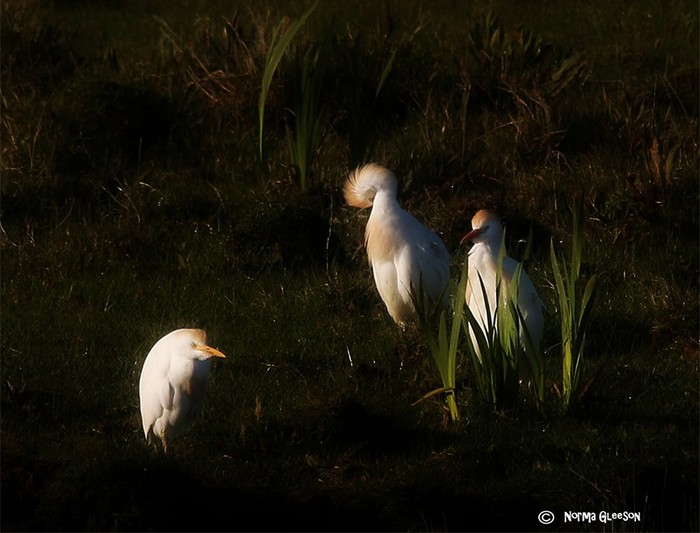
One of the tried and tested staples of recent weeks has been the Glossy Ibis at Lakenheath Fen RSPB reserve (Suffolk/Norfolk border) and that particular bird remained on site until 2nd and so clearly wasn’t the individual that appeared to the east-nor’east, alighting some 20 miles away at Mickle Mere SWT (Suffolk) on 27th-1st. The only other birds mentioned this week were a singleton on the Somerset Levels to at least 30th, at Loch of Strathbeg RSPB (Aberdeenshire) on 1st-2nd and Beith (Ayrshire) on 2nd, only the fifth county record but the third since 2012.

Some 30-35 Spoonbills were in familiar places around the country this week, several seen in north and east Norfolk for instance but a standout was the loner that appeared at Enfield (London) on the evening of 29th.
Fewer Great White Egrets were recorded this week, around 50 in all and they were mainly ones with a few twos and a handful of threes right across the country. The largest single site gathering was a quartet at Testwood Marshes HWT (Hampshire) on 27th.
The first Common Cranes of the week had a decidedly northern element to them; two singles were at either end of the Shetland island chain, one was seen at Urgista, Unst on 26th and the recent adult on the south end of Mainland was still at Quendale on 27th. In Aberdeenshire, three were seen near Loch of Strathbeg RSPB on 27th and the same day, way to the south, saw a record of a singleton over Bewl Water (East Sussex) while a group of nine was at Welney WWT (Norfolk) too (maybe the same nine that went through north and east Norfolk and then Lincolnshire?).
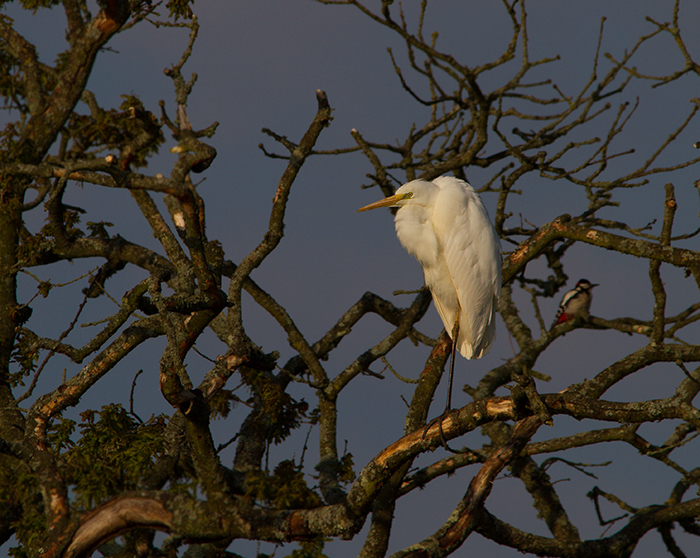
Later in the week, four more Cranes were seen on the Nene Washes RSPB (Cambridgeshire) on 29th and three were seen elsewhere in the county at Dogsthorpe on 30th with one “in-off” at Holme (Norfolk) the same day, which was also seen at Hunstanton and Choseley and one also remained near Gilston (Moray). May 1st saw a further two Grus loom in-off at Hunstanton (then track east) with another two at Holme later the same day, two more were at Little Marlow GPs (Buckinghamshire) and a flock of six were at Legbourne (Lincolnshire). The last day of the roundup week saw one drift over Gibraltar Point NNR (Lincolnshire) and Dungeness (Kent), two sail over Leighton Moss RSPB (Lancashire), Salford (Surrey), Sinfold (West Sussex) and Sandwich Bay (Kent) while three meandered over Brancaster (Norfolk).
No White Stork news this week, certainly not by way of birds that make you think “wild one”. The first this week was seen again near the Wensum Valley, at Great Ryburgh (Norfolk) on 26th and the second followed at Aylesford (Kent) on 29th. Back in Norfolk, another sighting came from the far west of the county, at Clenchwarton, on 30th and the same Sunday saw another appear at St. Albans (Hertfordshire). One or two more Norfolk sightings followed but they won’t be wild…
Finally, a Spotted Crake was reported from Red Rocks, Hoylake on the Wirral on 30th and it was still singing there the next day.
Kicking things off for this section, the Black Brant that remained at Frampton Marsh RSPB (Lincolnshire) through until 28th.
Next. Black Duck? Check. May 2nd. Strontian.
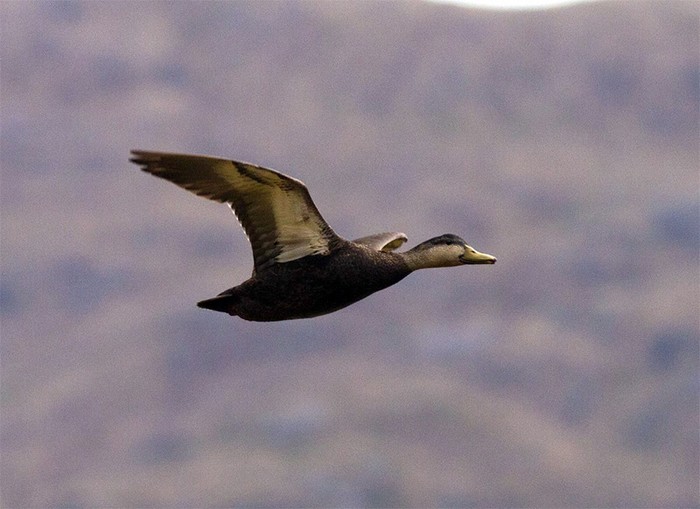
Still on the waters of the Cornish moors was the drake Lesser Scaup who remained on Siblyback Reservoir until 2nd.
Last week’s trio of Ring-necked Ducks were this week’s trio of Ring-necked Ducks - still present at Blanket Nook, Lough Swilly (Co. Donegal) to 26th and both Quoile Pondage (Co. Down) and Dungeness RSPB (Kent) to 1st.
Northumberland’s dubious duck, the drake Ferruginous Duck was at Washington WWT on the weekend, order is restored it seems.
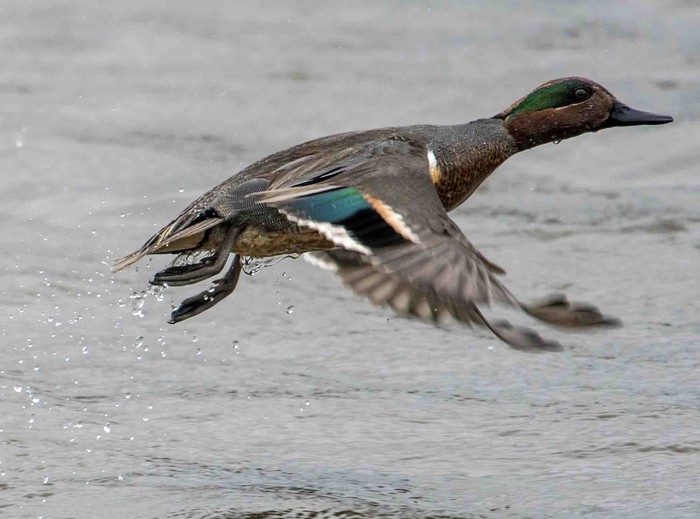
Two Scottish island drake Green-winged Teals kicked things off for the species, old hands still near Port Nis, at the northern end of Loch Stiaphabat, Lewis (Outer Hebrides) and North Ronaldsay (Orkney) on 26th. The third for the week was found on the pools near the Clonakilty Estuary (Co. Cork) on 28th and the same date saw news of the continuing presence of the drake at Druridge Pools NR (Northumberland).
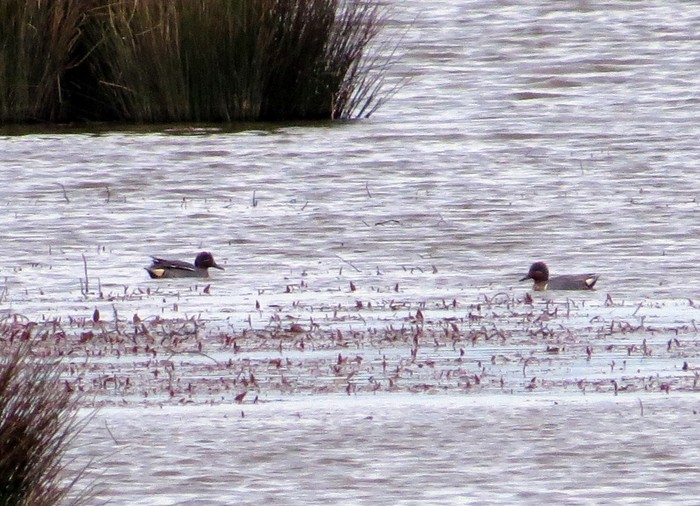
Back on the Outer Hebrides, a new drake was found at Loch na Reivil, North Uist on 29th and the same day saw news of the still present bird on Islay (Argyll & Bute). Scotland’s fifth of the week was found at Loch of Strathbeg RSPB (Aberdeenshire) on 30th.
Keeping the American Wigeon flag flying was the drake who remained at Udale Bay (Highland) to 28th. He’ll be gone soon. Probably.
There’s fewer and fewer seaduck to mention as spring really gets a grip and it was on the coast of Fife where the first offerings came, a single Surf Scoter present in Largo Bay on 26th-27th. A second drake was found off the Great Orme (Conwy) on 29th and a flybe youngster was seen from Dungeness (Kent) on 2nd, one of only two seen in the county in the last 10 years or more.
In Highland, the drake King Eider remained to 30th at least, again noted from Whiteness Head, not far from Fort George and in Aberdeenshire, on the Ythan Estuary, the old stager was seen again on 1st.
Nipping in ahead of one of next week’s prime predictions was the Broad-billed Sandpiper that was arrived at Breakwater CP (Anglesey) on 1st - a cracking record for the island, only the second ever seen there, and the first since one back in early June 1984 at Malltraeth. Locals would have been pleased to hear that it was along the Alaw Estuary the next morning which is when the second within two days dropped in to Spurn YWT (East Yorkshire).

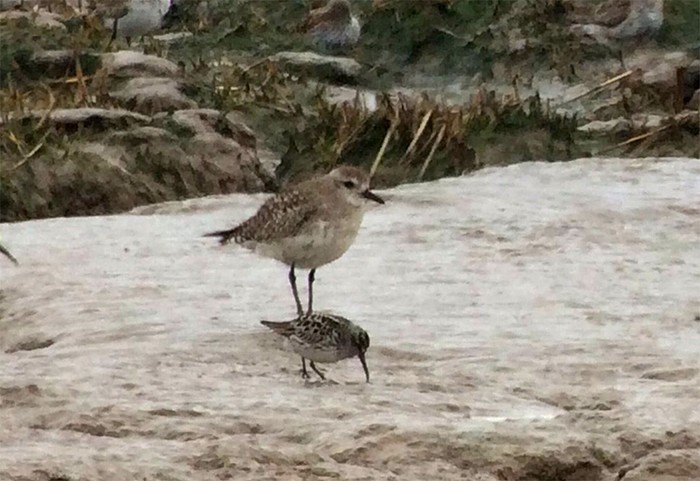
After such a busy week last week, the first few days of the new review period didn’t offer up a huge amount of Black-winged Stilt action, just the two birds on Tresco (Scilly) noted, seen on the island until 30th. Things got cracking though on the first day of the Bank Holiday weekend when a flock of five were found at March Farmers, Nene Washes RSPB (Cambridgeshire) - the largest group ever noted in the county - and two were found just across the border at Welney WWT (Norfolk), with a second male joining the pair on 1st with a fourth finding its way to the (rather attractive…) site on 2nd.
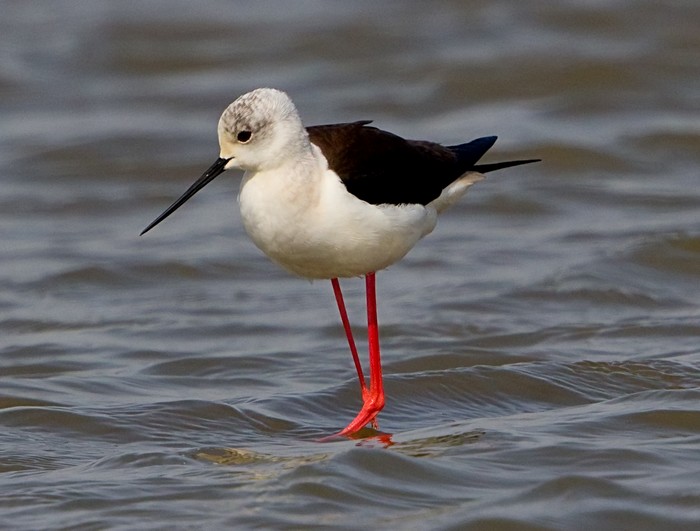
The excellent recent run of records continued on 30th when a group of three more Black-winged Stilts were found at Boyton Marshes RSPB (Suffolk) two of them moving to nearby Hollesley Marshes RSPB later the same morning. The trio then reconvened at Orfordness later the same day. Back in Cambridgeshire, a lone Stilt was on the Ouse Washes RSPB on 1st.
In the north of Ireland, the Long-billed Dowitcher noted last week at Quolie Pondage NR (Co. Down) was still present on 26th-30th, the eighth for the county and the first in a decade, the most recent record being a one day youngster in November 2007 (a few birds have, literally, been borderline between Down and neighbouring Antrim).

In Dumfries & Galloway, a first-winter American Golden Plover was reported from Luce Sands on 28th though it was apparently rather distant for much of the time but it was presumably the same individual which then appeared on 30th near Monreith where it stared to 1st.
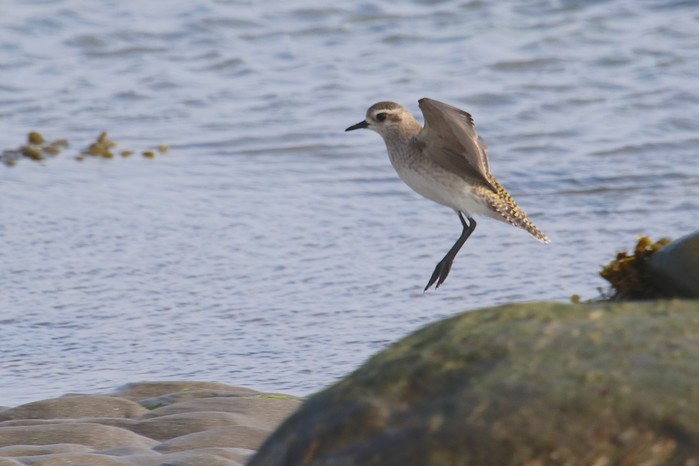
The week began with the report of a Kentish Plover along the south coast, at Tide Mills (East Sussex) on 26th and it was followed by a male at Praa Sands (Cornwall) on 27th who remained to 28th. Male KP #2 this week was found at The Naze (Essex) on 29th and follows on from one at the same site last June. Any Kentish Plover is a very tidy find but the discovery of an inland female in the Home Counties on 1st was exceptional. Found at Pitstone Quarry (Buckinghamshire/Hertfordshire border) this was a pretty amazing find so far inland, needless to say it was a huge rarity for birders on either side of the county divide.
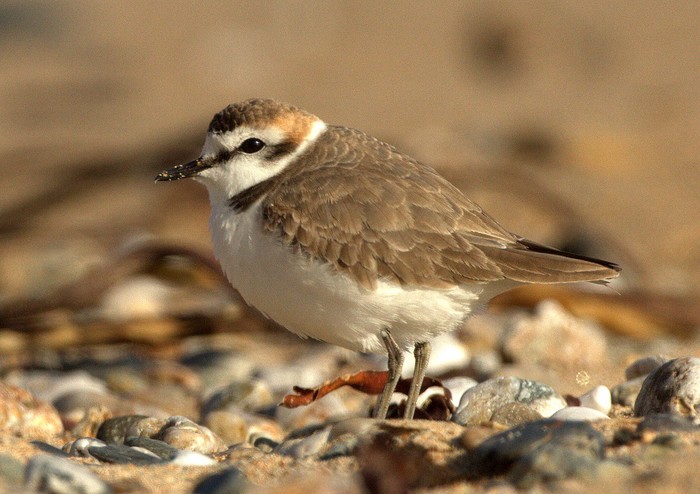
After the sporadically noted wintering Temminck’s Stint in Staffordshire finally seemed to disappear a couple of weeks ago, the first true spring arrival made a brief appearance at Great Orme (Conwy) on 27th, the first in the county since 2015 and only third record there in the last decade. New on 30th were four single birds dotted around southeast England, at Beddington SF (London), Tyttenhangar GPs (Hertfordshire), Little Marlow GPs (Buckinghamshire) and Otmoor RSPB (Oxfordshire). May Day saw the 6th and 7th of the week drop in to Rye Harbour NR (East Sussex), Cley Marshes NWT (Norfolk) and then two were found at Newport Wetlands (Gwent).
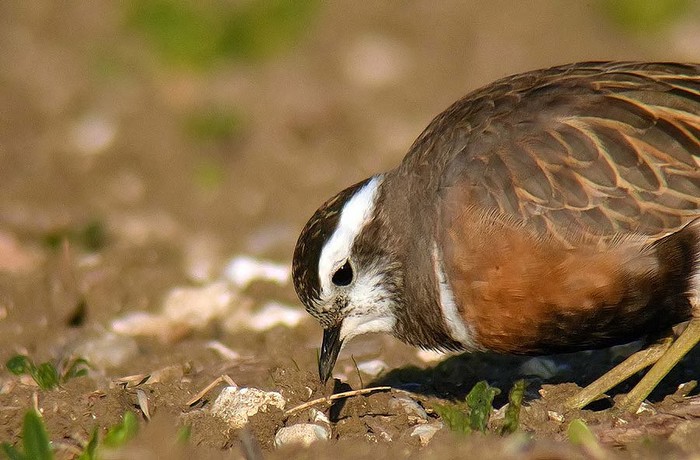
Four newly arrived Dotterels were found at Therfield (Hertfordshire) on 26th with the same day seeing two found in bean fields near Wardy Hill (Cambridgeshire) and also on The Range RSPB (Anglesey). The next day saw a single bird arrive near Elmdon (Essex) while the Herts., four remained to 30th. Also on 29th, a female was located at Kilnsea (East Yorkshire) and on 30th a lone bird was on Derry’s Myroe Levels and two were in Wales, again at Foel Fras (Gwynedd). The next day it was Carmarthenshire that welcomed a trip of seven birds at Garreg Lwyd and a group of three was in West Yorkshire, at Warley Moor reservoir. The last ones for the week were threes at West Kip, in the Pentland Hills (Lothian) and Fanore (Co. Clare) with a singleton at Kilkea (Co. Kildare), all on 2nd.

New for the year this week was the Pectoral Sandpiper found on the Isle of Wight, at Brading Marshes RSPB on 26th-28th.
Time to mix things up a little and start with an ever-so-slightly unexpected Gull-billed Tern. It feels a little unexpected only by virtue of the weather but this is a species that is a bit of an April regular, so first stop for this section is Clonakilty in County Cork.
This week’s Gull-billed Tern arrived on 26th and was the first in the county since a two-day adult was seen near Ballymacoda in May 2006. That was only third Cork record, the others were at Courtmacsherry and Kilbrittain in July and August 1998 and Ballycotton on April 29th 1993.
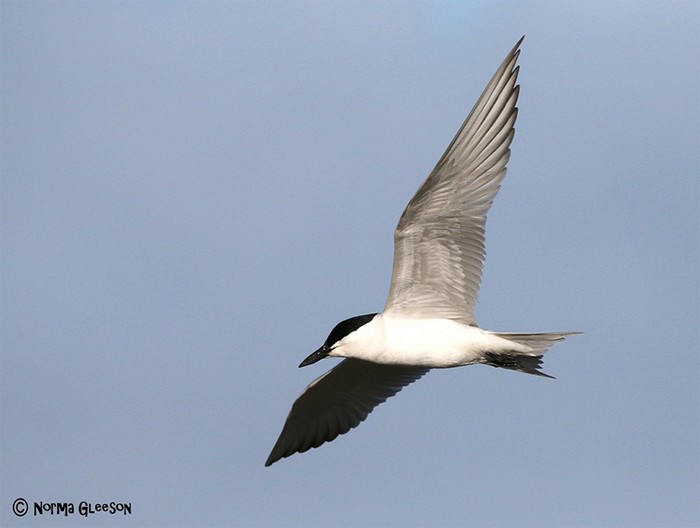
There are 19 accepted Irish records to date, from nine different counties, with a dozen of those coming since the start of the 2000’s. The leading county in terms of records is Wexford, scoring eight Gull-billed Terns in total and then comes Cork, now with four records.
Just shy of 340 acceptances are shown in the record books and 24 of those have been April birds and this week’s Cork individual is the third Irish occurrence in the month and remained to 1st.
New too for 2017 was the White-winged Black Tern that was found at the outfall at heysham (Lancashire on 30th, a day of heavy passage nationally of both Arctic and Black Terns.
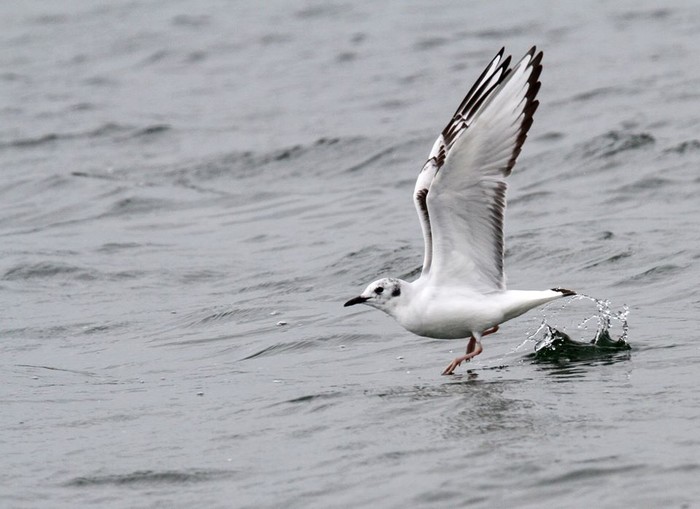
There was plenty of interest shown in the 1st summer Bonaparte’s Gull found at Longham Lakes (Dorset) on 26th; only the seventh record for the southwestern county and the second within just a couple of years, following on from one around Portland and Weymouth in March and April 2015. This month is a particularly good one for the species in Dorset, four of the, now, seven records have fallen in the month.

Four further first-winter or first-summer Bonaparte’s Gull remained to the start of the weekend, at Blashford Lakes HWT (Hampshire), Farmoor Reservoir (Oxfordshire), Abberton Reservoir (Essex) and also still at Kenmare (Co. Kerry) all noted to between 26th-29th...

…five is an exceptional number for any week at any time of the year…and that became a stand-out six when the adult found last week in Aberdeenshire was recorded again around Loch of Strathbeg on 28th. The Oxfordshire bird shifted to Rushy Common NR on th evening of 29th.
Also pretty exceptional was the first-summer Ring-billed Gull that was found at Minsmere RSPB (Suffolk) on the morning of 28th; only the fourth in the county in the last decade and the first since a first-winter was seen for an evening in the roost at Lackford Lakes in February 2013. After a while away from the reserve the bird was back in the afternoon and was present again the following day too.
Ahead of the weekend, the only other Ring-bills mentioned were the single first-winter still at Tralee Bay Wetlands (Co. Kerry) on 26th-27th and the adult still at Belfast Lough RSPB (Co. Antrim) to 30th.
Iceland Gull numbers held at around the 50 mark for another week, birds recorded in 20 British and Irish counties over the last seven days. At least 30 were in Scotland (in eight counties), 18 of which were on the Outer Hebrides including six at Rubha Arnal on 28th. England managed 13 birds in seven counties, at least four of those in Cornwall while Ireland’s seven birds were thinly distributed across five counties.
There’s not masses to say about Glaucous Gulls - numbers down a touch to 26 in 14 British and Irish counties. Scotland saw 18 noted, six of them in Highland and at least more on the Hebrides, with three at Rubha Arnal on 28th. England managed six and there was one each for Ireland and Wales.
The first three Red-footed Falcons this week all appeared on May Day; two were both in Norfolk; a showy first-summer female around the drying barns at Choseley and at least one fly through male at Kelling Heath, Kelling Quags, Weybourne Camp and Gramborough Hill, while a female was between Seaford and Alfriston (East Sussex) - having just three was perhaps a little surprising given the reasonable weather.
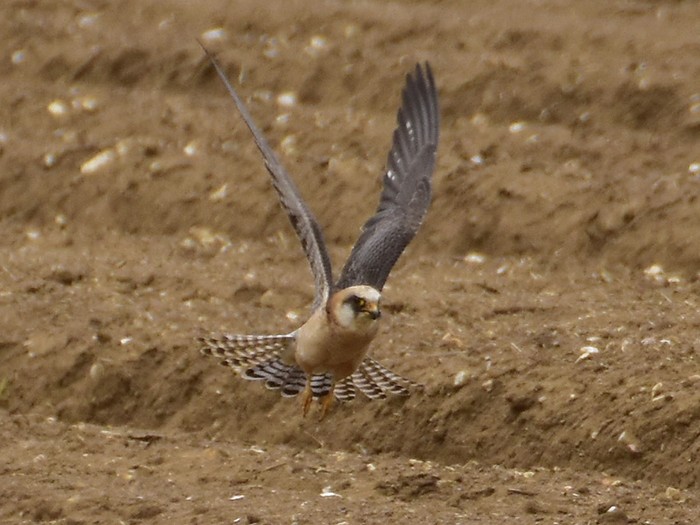
The improving weather that began to appear just ahead of the weekend presumably gave the migrant Black Kite that appeared at Cliffe (Kent) on 27th a bit of a final boost over the Channel. The same applies to the bird (assuming it’s a different bird) that was seen over the Ashdown Forest (East Sussex) later the same day.
New on 28th was the first Black Kite for Lothian in almost five years, this one seen over Edinburgh before heading west. Another fresh arrival on 29th was seen at Hickling Broad NWT (Norfolk) and two or three more made themselves known on the SE wind on 30th - at Seabrook and Folkestone(Kent) and over St. Mary’s (Scilly) which, it transpired has been on Tresco the previous day. Another was reported from a moving car along Kent’s M20 on 1st.
The recently returned female Montagu’s Harrier was at Blacktoft Sands RSPB (East Yorkshire) throughout the week and lone males were seen on Cape Clear Island (Co. Cork) on 29th (the first in the county since 2012) and, the same day, at Christchurch Harbour (Dorset) (on his way to Norfolk). A female Montagu’ was noted coming in-off the sea at Thurlestone (Devon) on 30th while a ringtail harrier seen near Loch of Strathbeg (Aberdeenshire) on 29th as either a Montagu’s or Pallid. Ditto the bird seen over both Incleborough Hill, Glandford (Norfolk) and New Holkham on 1st (but was that the same as the brief Monts at West Runton the same morning?).
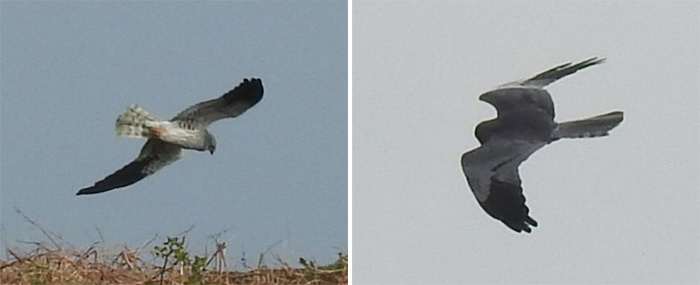
Having had a couple of days out in both Broadland and up in to the bottom corner of north Norfolk last week, what is presumed to be the same sub-adult White-tailed Eagle was back in Suffolk at the start of the new week, present around the saltings and trees near Stutton Mill, to the south of Ipswich, on 26th. This was then presumably the bird reported flying over the A47 near Norwich on 29th.

The second White-tailed Eagle of the week was a mightily impressive padder for those paying homage to the Lancashire Pallid Harrier - a young Eagle seen for a couple of days on the trot around the Whitendale Valley on 27th-29th (then over the M6) and was the first county record since the report of one over Leighton Moss in April 2010. What could then have been the same BoP was reported at Stainton (South Yorkshire) and then Anglers CP (West Yorkshire) on 29th but with the sighting back in Lancashire the same day, it looks like we’ve got three out and about right now. That may well be the case as a young bird was noted at Derwent Reservoir (Co. Durham) on 1st.
New on Friday was a male Eastern Subalpine Warbler found at Cheyne Weare, Portland (Dorset), third Sub-A on the isle in the last two and a bit weeks and he was on site to 2nd with a second male Eastern arriving on the end of the Shetland Mainland, at Scatness, on 2nd. Elsewhere on the south Mainland, a new female Subalpine Warbler sp., arrived on at Geosetter on 30th and a second was at Valyie, Unst on 1st.
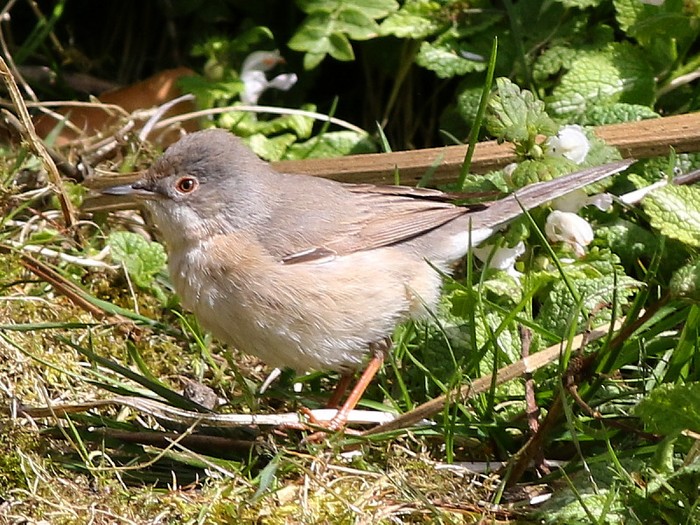
Back on Portland, the second day of May brought with it another excellent spring find, not quite as pretty as the species above but a Dusky Warbler at this time of year is a fine find - this one located on the Top Fields. A second on 2nd was found later in the day on Fair Isle (Shetland).

Also new on 2nd was another autumn speciality, a Pallas’s Warbler which was found on Brownsman, Farnes Islands (Northumberland) - the second record for the spring so far.
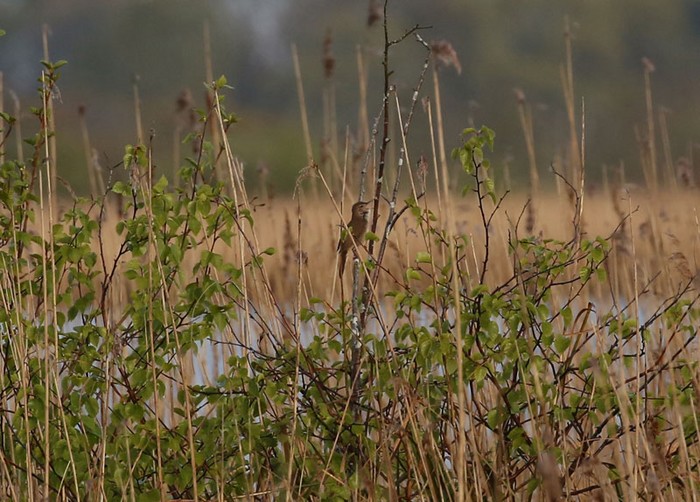
Norfolk’s singing male Savi’s Warbler remained at Hickling Broad NWT through until 2nd, still giving it large and often showing as well as any in the county in recent years. East Anglia’s second Savi’s remained reeling in the reeds and sallows at Minsmere RSPB (Suffolk) also through to 2nd.
The third Savi’s Warbler of the week (in a decent showing for the species) was found in the Canal Bushes at Spurn YWT (East Yorkshire) on 29th, still a very rare bird in the county, this being only the fourth in the last decade or so.
What could be our final Yellow-browed Warblers of the spring were seen and heard in Somerset, at Tealham Moor on 26th and reported from Gunton (Suffolk) on 29th.
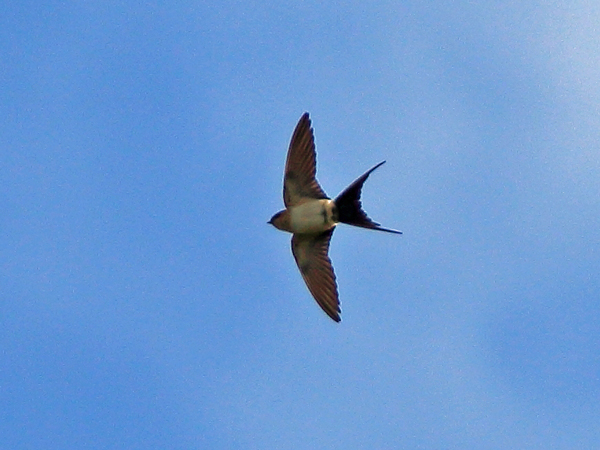
A new Red-rumped Swallow made itself known amongst the hirundine flock at Arlington Reservoir (East Sussex) on 27th and brings us back to our spring overshoots. It was followed quickly by two more in the southeast on the same day; found at almost the same time were singles over Island Barn reservoir (Surrey) and Abberton Reservoir (Essex). A further three followed later in the day on 27th, a busy little day for the species; one was found at Longham Lakes (Dorset) and two appeared over the pits at Holme Pierrepont (Nottinghamshire) - the first in the latter county for almost exactly four years.
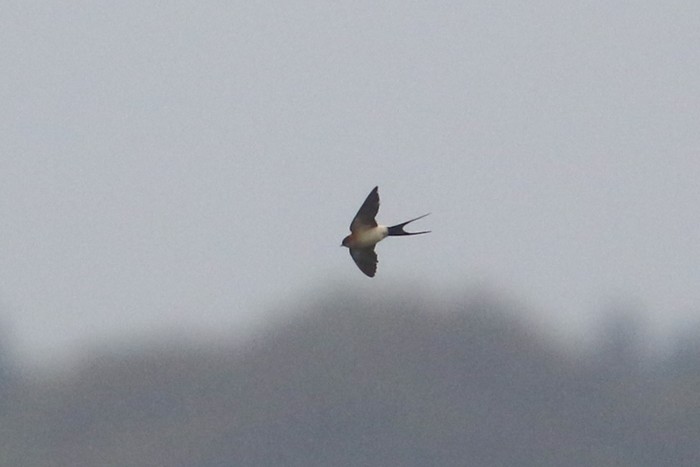
As lovely as all these fresh spring birds were, the most startling feature of the day was the appearance of two of the day’s Red-rumps making themselves known at sites that were hosting Bonaparte’s Gulls at the same time, at Abberton and Longham. A very cool double for both sites (and another Red-rump was reported at Abberton on 1st).
The total crept up from six to eight on 28th when two Red-rumped Swallows flew along the beach at Greenore Point (Co. Wexford), the first for the southeast county since May 2013 with the ninth appearing at Durslton CP (Dorset) on 29th.
What may have been a new Woodchat Shrike was seen briefly on the Lizard (Cornwall) on 26th - there’s been a gap between the records on the peninsula, so a new one seems fair enough.
It was a pretty slow start for Golden Orioles this week, just one seen ahead of the weekend with a male noted heading away from Porth Hellick, St. Mary’s on 26th and a second gold and black bobby dazzler was found on Cape Clear Island (Co. Cork) on 2nd. The same date saw two more noted, on the Isle of May (Fife) and Hatfield Moors (South Yorkshire).
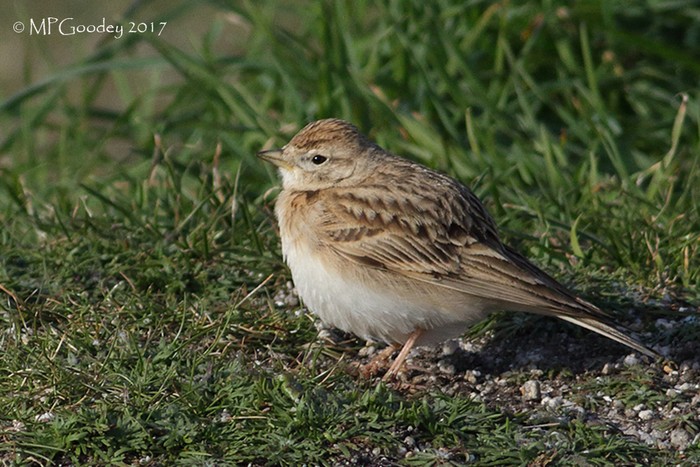
The new week began with the second Tawny Pipit within just a few days, this one noted for a few minutes at Pagham Harbour LNR (West Sussex) on 26th. On Scilly, the showy Short-toed Lark remained on St. Mary’s until 2nd and a Richard’s Pipit or two was noted over on Bryher and also St. Martins on 30th and then Rodley (Gloucestershire) and the Lizard (Cornwall), both on 2nd.

A male Serin was reported in gardens at Deal (Kent) on 26th and a female showed well on the Isle of Wight, at Ventnor on 28th. The following day, Dorset scooped up two coming in-off at Chesil Cove while the Ventor female continued to show. With the southeast wind blowing, there wasn’t much of a surprise that Norfolk’s east coast picked up a bird or two and a Serin at Waxham on 30th was the pick of the bunch. The second found on 30th was deep in to southeast Cornwall, at Rame Head and on 2nd, one flew over the trapping area at Dungeness.

The first Hoopoe of the week flew across Bowling Green Marsh RSPB (Devon) on 29th with other the same day reported from Folkestone (Kent) and over St. Mary’s (Scilly). Another southwestern bird was on the Lizard (Cornwall) on 30th with another reported near Bournemouth (Dorset) while five followed on May 1st, at Minsmere RSPB (Suffolk), Dursey Island (Co. Cork), on North Ronaldsay (Orkney) and on Mainland Shetland at Scousburgh and Loch of Spiggie. The final Upupas of the week were found on the cliffs at Burton Bradstock (Dorset) and near Buxton (Derbyshire) on 2nd.
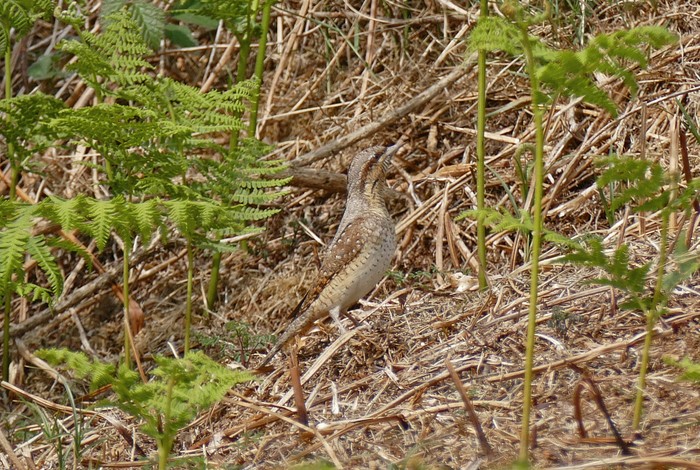
The first day of the new month saw Wryneck number eight drop on to the East Yorkshire coast, found at Buckton with one on Fair Isle (Shetland) following soon afterwards. Two further Shetland birds were discovered on 2nd, on Noss and Unst and the week ended with late news of a garden bird at Cressex (Buckinghamshire) on 29th.
A Wryneck was also trapped this evening, always great birds to see in the hand! video by Kris Wilson pic.twitter.com/t2ib9sMW6O
— Fair Isle Bird Obs (@FI_Obs) May 2, 2017

In Cornwall, the two Little Buntings hadn’t quite given up the ghost on Goss Moor, still on site to 27th with one around on 28th while new was the fresh arrival on Fair Isle (Shetland) on 2nd.
Just one Great Grey Shrike was recorded ahead of the long weekend, still in the valley below the Warren House Inn, Dartmoor (Devon) on 28th and just one more followed, still on Hartland Moor (Dorset) on 1st.
Another week, another drop in Waxwing numbers but there were still some 445 around the country over the last seven days. Over half were split between the Midlands and northwest while the largest flock was logged in East Anglia.
Wales (0) - 0…
SW (0) - 0…
SE (1) - seen at Whitstable in Kent on 1st
Ireland (3) - 3 recorded in County Louth, at Dundalk on 27th
Scotland (41) - 20 at Elgin, Moray on 29th
NE (46) - a flock of 25 in Scarborough, North Yorkshire on 30th
EA (82) - including the largest gathering this week, 60 birds in Melton, Suffolk on 26th
Midlands (118) - 25 logged at Chilwell, Nottinghamshire on 28th
NW (154) - 42 remained at Delamere, in Cheshire to 1st
The strong early spring showing of vagrant Blue-cheeked Bee-eaters in Europe continued this week when in Spain, a visiting group of birders from the UK discovered Extramadura’s first record of the species near Vegas-Atlas on 28th. Does this some how bode well for another UK visitor later this spring or summer perhaps?
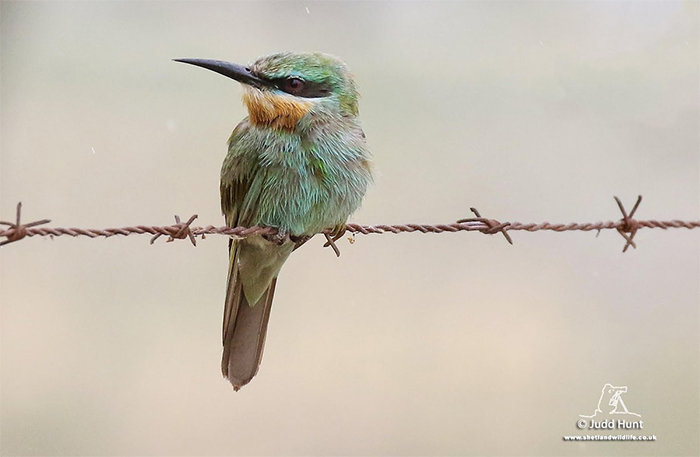
A short video clip of the Blue-cheeked Bee-eater & European Bee-eaters in Extremadura. @Juddhunt1 @ShetlandWild pic.twitter.com/6QMvgEYc02
— Christopher Teague (@ChristopherTea1) May 1, 2017
Hot on the heels of the female White-headed Duck, Belgian birders started off the new week with news of a photographed Slender-billed Gull at Doel, East Flanders on 26th, the third record for the country. What was presumably the same bird moved to the west and into the Netherlands, arriving at Ossenisse on 2nd, the 7th Dutch record.
Germany’s adult Black-browed Albatross was around the island of Sylt, Schleswig-Holstein on 27th (the island was inadvertently moved to Danish territory last week…) and was still there on 30th (it apparently spends a far bit of time here at the mo).
It appears to have gone all Mediterranean on Iceland - last week the northern nation hosted the first-ever Black-winged Stilt, this week saw the arrival (and not that far from the Stilt site at Gardur) of three Night Herons at Stafnes, in the southwestern corner of the country, on 26th, not dissimilar to the recent record of two birds on the Outer Hebrides, suggesting a push way up to the north from somewhere down south. These will be records 11 to 13 for Iceland.
Otherwise it was a surprisingly quiet week through Europe and beyond (by the look, and lack, of WP news emerging - not that I’m complaining…) and aside from a Polish drake American Wigeon at Kuligow, Masovian on 27th (the 7th national record), the first Rose-coloured Starling for Cape Verde Islands, at Santa Maria on 25th and a still present Desert Finch at Cape Greco, Cyprus to 1st, that seemed to be it.
The long range forecast seems to still be suggesting that the winds that brought a decent array of birds nationally this week (well, once it shifted to the southeast and broke the northerly grip on proceedings) may soon be shifting back to a northerly quarter, but this time with a crucial eastern element to them.
Northeasterlies in early May can be productive, they can also be an absolute nightmare (depending on where you do your birding), full of promise but ultimately they can occasionally be cool and rather a let down.
Currently they skies are due to be clear as a bell (on the east coast at least) and with a light to moderate NE’ly blowing, it may be one of those where the majority of birds sail serenely over anywhere from Northumberland to Norfolk and find themselves a place in the far southwest, the west coast of England or, as can often be the case, across the water to Ireland.
A few regulars are almost certain to appear - history shows that Red-rumped Swallows and Subalpine Warblers have been plentiful within the week ahead, well over 50 of the former and 70 or so of the latter, so don’t be surprised if there’s one or two of them in the next seven days (even with the northeasterly).
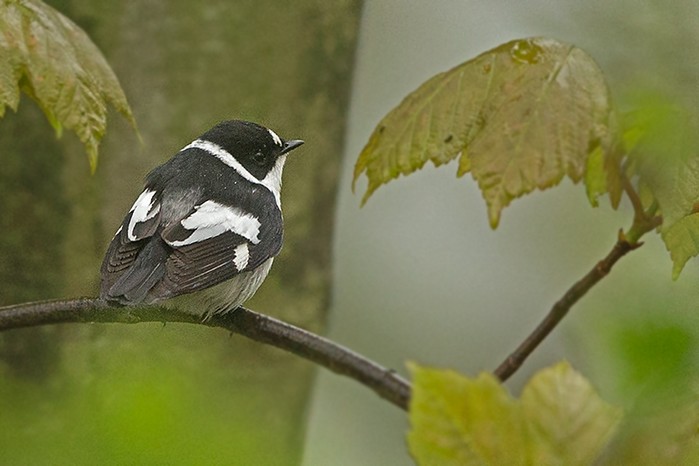
Conditions may be favourable to a couple of species mentioned last week, Citrine Wagtail and perhaps a Collared Flycatcher but also for species like Thrush Nightingale and maybe Red-throated Pipit too, both of which have been noted in the next seven days. It is also drawing towards Great Reed Warbler time too - there’ve been 10 accepted records in previous May 3rd-9th.
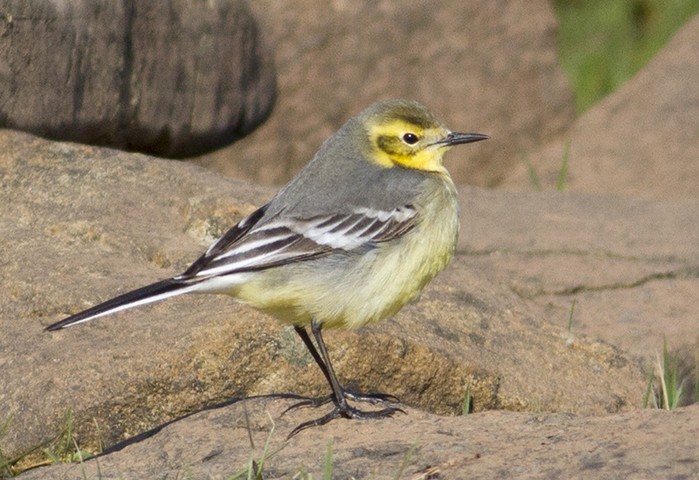
Non-passerines to consider include Whiskered Tern (again! - WWBT as here but that went to the wall when the SE wind blew…) and of course it is edging towards prime time for our first Terek Sandpiper and any of three Pratincole species to play with and muse upon; Collared still the most frequent but with one Black-winged and one Oriental, that being the well twitched bird at Frampton Marsh, in Lincolnshire, in May 2010.
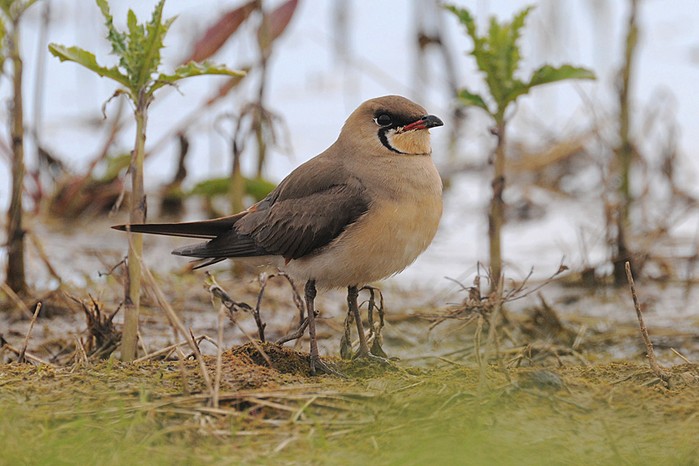
Other exceptionally rare non-passerines to make an appearance in the week ahead include our first and sixth records of Audouin’s Gull (at Dungeness on May 5th 2003 and Minsmere on May 9th 2011) and there’ve also been two records of Slender-billed Gull, at Grove Ferry (Kent) on May 5th 1999 with a pair at Cley exactly a year later - 2000 was the last year we’ve had a twicthable S-bG, and its only the brief Titchwell bird that has followed (in 2014).
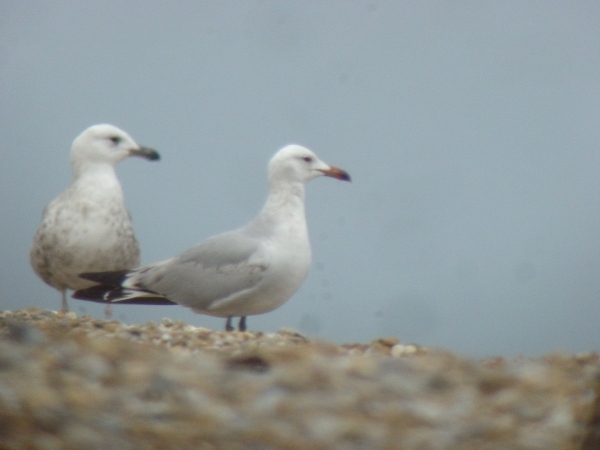
As we turn up the heat on the rares, we’ll skip merrily by the five Black-eared Wheatears and half a dozen Rock Thrushes and cast our eyes to species like Eastern Bonelli’s Warbler (still a much-needed bird for many, two of the seven acceptances coming in very early May) while the most recent “available” Asian Desert Warbler spent five days at Sammy’s Point, Easington from May 7th 2000. Lingerers of either of these two would go down extremely well amongst the masses.
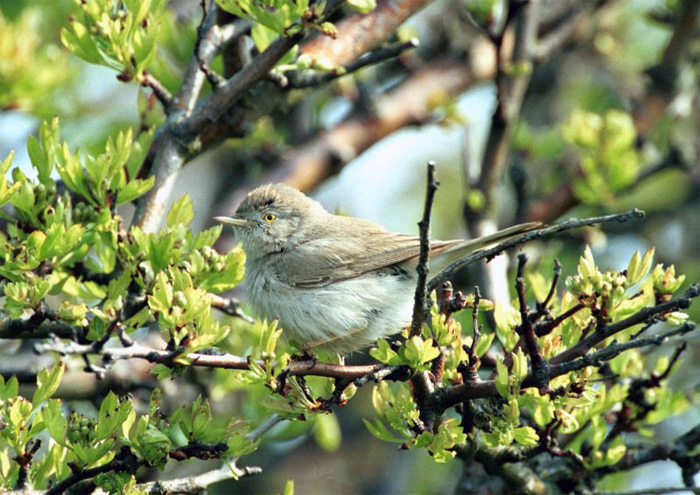
Before the grand finale, it would be remiss to ignore the Americas - they’re moving too, and anything lingering from last autumn could be picked up any day. Slate-coloured Junco and White-throated Sparrow still feel “most likely” but there’s been the recent Myrtle Warbler on North Ronaldsay and then Shetland (in early May 2014) and, lest we forget, the suppressed (though still twitched) Rose-breasted Grosbeak at Holme for two days in May 2006.
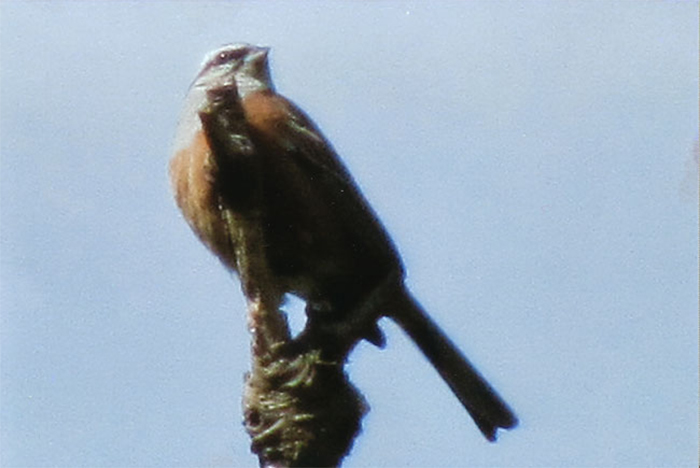
Something that caused even more of a stink than the invite-only Norfolk Grosser was the North Yorkshire Rock Bunting, subject of debate to this day when folk are bored and on long car journeys, seen and photographed at Bolton Abbey on May 8th 2012.
That’s a much desired and highly prized mega but arguably the one that tops it is the Lundy Bimaculated Lark - Britain’s first was found on the rocky island off the north Devon coast on May 7th 1962 and remained there for a further four days after that…
Any rarity historian worth their salt will know that the Devon bird is one of just three recorded here, the other two followed within the space of eight months of each other, on St. Mary’s in October 1975 and then Fair Isle in June 1976. The 41 years since is a massive gap and only a mystic with exceptional foresight could ever predict when the next one will appear. Or what the weather will be when it does.
Chances are it won’t be a northeasterly in May 2017, so we’ll play safe and opt and plump for the scare marsh tern and stripy-headed shorebird as this week’s shoe-ins and chicken out totally from the outrageous calls of recent weeks.
Straight bat and all that.
Mark Golley
3 May 2017
Share this story






